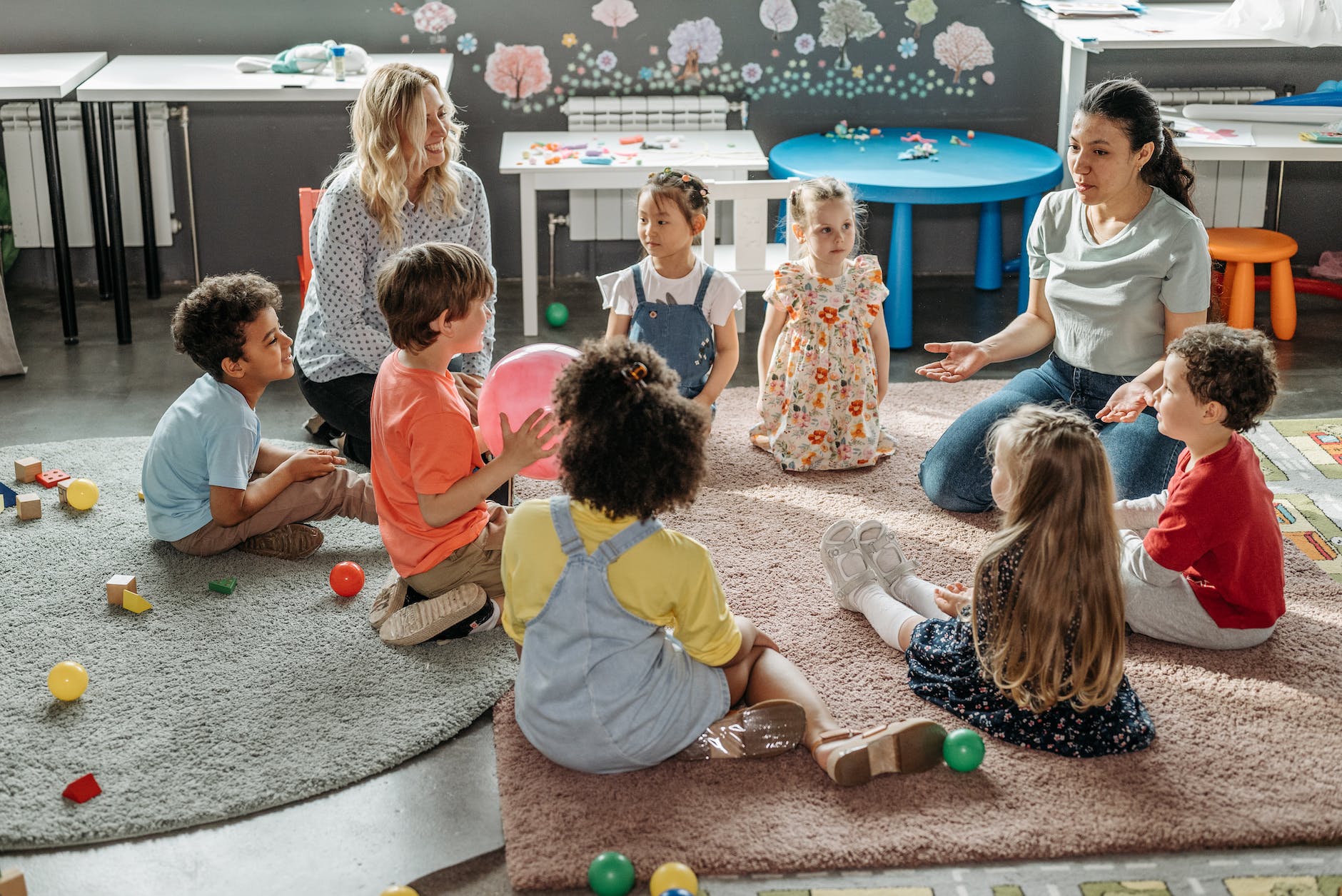Myths and facts about dyslexia
Even though dyslexia has been well-researched, there are still many myths surrounding this specific learning difference. One of them is that symptoms of dyslexia do not appear until primary school years. It is true that in the early years, i.e. in children aged 3 to 5, dyslexia can be difficult to detect, as they are still developing their language skills. However, symptoms of this specific learning difference can be observed in children as young as three or even younger. Many young children might face similar struggles as those who are at risk of dyslexia, but it is the severity of the challenges and the length of time they persist for which lead to attributing them to this specific learning difference.
Before I move on to discussing the signs of dyslexia in pre-school language classroom, I would like to refute some of the most common myths surrounding dyslexia which, as Boryga (2022) observes, “remain stubbornly influential” and which affect our perception of leaners’ behaviour and their approach to learning in our language classrooms.
Myth 1: Dyslexic learners are not intelligent.
Fact: Dyslexia occurs in learners with high, average, and low intelligence. However, many learners who struggle to read do not have a high opinion of themselves and assume that they are not bright.
Myth 2: Dyslexic learners are lazy and need to work harder.
Fact: Dyslexia is a specific learning difference that is neurological in origin. In other words, dyslexic brains function differently but this has nothing to do with effort they have or have not been making. In fact, dyslexic learners often try harder than their peers to overcome their learning obstacles and invest a lot of energy in developing alternative ways of learning and processing information. Interestingly, many thriving dyslexic adults claim that dyslexia pushed them to be more creative and resilient.
Myth 3: Most learners with dyslexia will eventually outgrow it.
Fact: Dyslexia is a lifelong condition and adults who have learnt to read effectively are still dyslexic.
Myth 4: Dyslexia can be cured.
Fact: There is no medication that can cure dyslexia. It is true that dyslexic students might be also diagnosed with ADHD and struggle with attention but the medication they might be on is aimed at reducing the symptoms of inattentiveness or hyperactivity. It will not reduce, for example, the severity of reading challenges. However, early identification and individualized intervention is likely to have a positive effect on reading skills and consequently minimize the impact of dyslexia on daily life.

Myth 5: Dyslexic learners should read more in and outside the classroom.
Fact: It is true that more opportunities to read benefit all learners, but dyslexic learners need more practice focused on decoding work (i.e. matching the sounds of the language to the symbols we use), as well as practice that develops fluency and comprehension, rather than a daunting perspective of an endless list of books.
Myth 6: Dyslexia is a vision problem.
Fact: This myth might have originated form the fact that dyslexia was once referred to as word-blindness. However, dyslexia is a language-based learning difference that is located physically in the brain. In other words, eye and vision problems do not cause dyslexia and dyslexic learners are as likely as anyone else to have them.
Pre-school signs of dyslexia
Pre-school is an educational institution or a learning space offering early childhood education to children aged 3 to 5. And contrary to common belief, it is as early as in pre-school that signs of dyslexia can be observed. Pre-school learners at risk of dyslexia might:

- have a history of delayed speech development;
- have speech problems, i.e. they might not be able to pronounce long words properly and jumble up phrases, e.g. beddy tear;
- struggle to express themselves while speaking, i.e. they might not be able to remember the right word to use or put sentences together correctly.
- show no interest in letters or words;
- find it difficult to learn nursery rhymes or song lyrics that rhyme;
- struggle with learning to sing or recite the alphabet and other sequences;
- tell stories that are difficult to follow or talk about events in an illogical order;
- be more challenged by gross motor tasks involving balance, coordination, body awareness, physical strength, and reaction time. Similarly, they might have difficulties with fine motor skills and consequently they might be unwilling to take part in arts-and-crafts activities and later on to learn to write.
- struggle with drawing – their pictures usually have rich content but very simple form;
- have difficulties with putting together a simple puzzle or a picture cut into pieces;
- easily forget names, i.e. names of their peers, their teacher, common objects, colours, animals, etc.;
- seem not to be listening and paying attention, as well as struggle to listen and pay attention;
- be unable to sit still.
Teaching English to dyslexic young learners
Even though dyslexia is known to affect a learner’s ability to read, write and spell, as well as to learn a foreign language, very little information is available on teaching English to dyslexic pre-school learners aged 3 to 5.
It is perhaps due to the fact that, while teaching foreign languages in this age group, we emphasize the development of listening skills, since young learners are not able to read and write yet in their mother tongue and dyslexia seemingly does not influence this aspect of language learning.
However, even pre-school dyslexic learners might have problems with, among others, working memory. As a result they will, apart from the difficulties discussed in the previous section of this article:
- have trouble remembering all the steps in oral directions;
- have trouble thinking and doing at the same time;
- appear highly distractible and inattentive;
- stop working because they have lost track of what they are supposed to do.
All this means that pre-school language teachers should:

- repeat, revise and recycle the material more frequently than they would normally do. Ideally, parents could be asked to re-watch the cartoons and re-listen to the songs that were used in the classroom with their children.
- use even shorter and less complex tasks than they would normally do.
- use materials with very short, simple phrases and sentences that come up repeatedly. A wonderful resource in this respect are the books by Chris Haughton, e.g. Shh! We have a plan or A bit lost. What is more, we can find animated versions of these books on YouTube, which can be used even with three-year-olds, as they are short and their simple language is well-coordinated with the animations. This allows children to understand the story even without extensive explanations from the teacher. Moreover, this technique: book first, its animated version next allows teachers to expose young learners to the same set of phrases and sentences more than once in an interesting way (Do you know children who don’t like watching cartoons? 😉), which in turn increases the likelihood of remembering meaningful chunks of language.
- reduce the number of language items they would like to introduce during one lesson and practise them in a variety of ways and contexts, so that pre-schoolers come into contact with them more than once.
- use simple instructions giving one step at a time. Teachers should give another step only when they have made sure that all learners completed the first one. They should also follow the instructions with children, i.e. if they want children to sit down on the carpet, they should sit down with them.
- use bigger elements while doing art-and-crafts with children, as bigger elements are easier to grab and manipulate. Additionally, when doing arts-and-crafts activities with pre-schoolers, teachers should avoid having them do everything start to finish, instead giving them partially (in extreme case almost entirely) pre-made sets.
- remember that dyslexic learners might be prone to sensory overload. This means that teachers should pay particular attention to and adjust accordingly the volume of the recordings and cartoons they use, as well as the brightness of the whiteboard or the computer screen. They should also choose less ‘flashy’ and noisy videos and songs and monitor noise levels in the classroom.
- let children rest. Contemporary pre-schoolers are very busy little humans. Additionally, living with dyslexia is extremely tiring, as it affects memory, organisation, time-keeping, concentration, multi-tasking and communication. That is why children should have the right to refuse to, for example, take part in a movement-based activity and simply sit on a chair or lie down on the carpet. They could also just simply listen to a song or a story read by the teacher or watch a cartoon without having to do anything else. Young learners’ well-being is as important as the well-being of the adults who work with them. Tired, overstimulated, constantly on-the-go children will never learn a language effectively.


